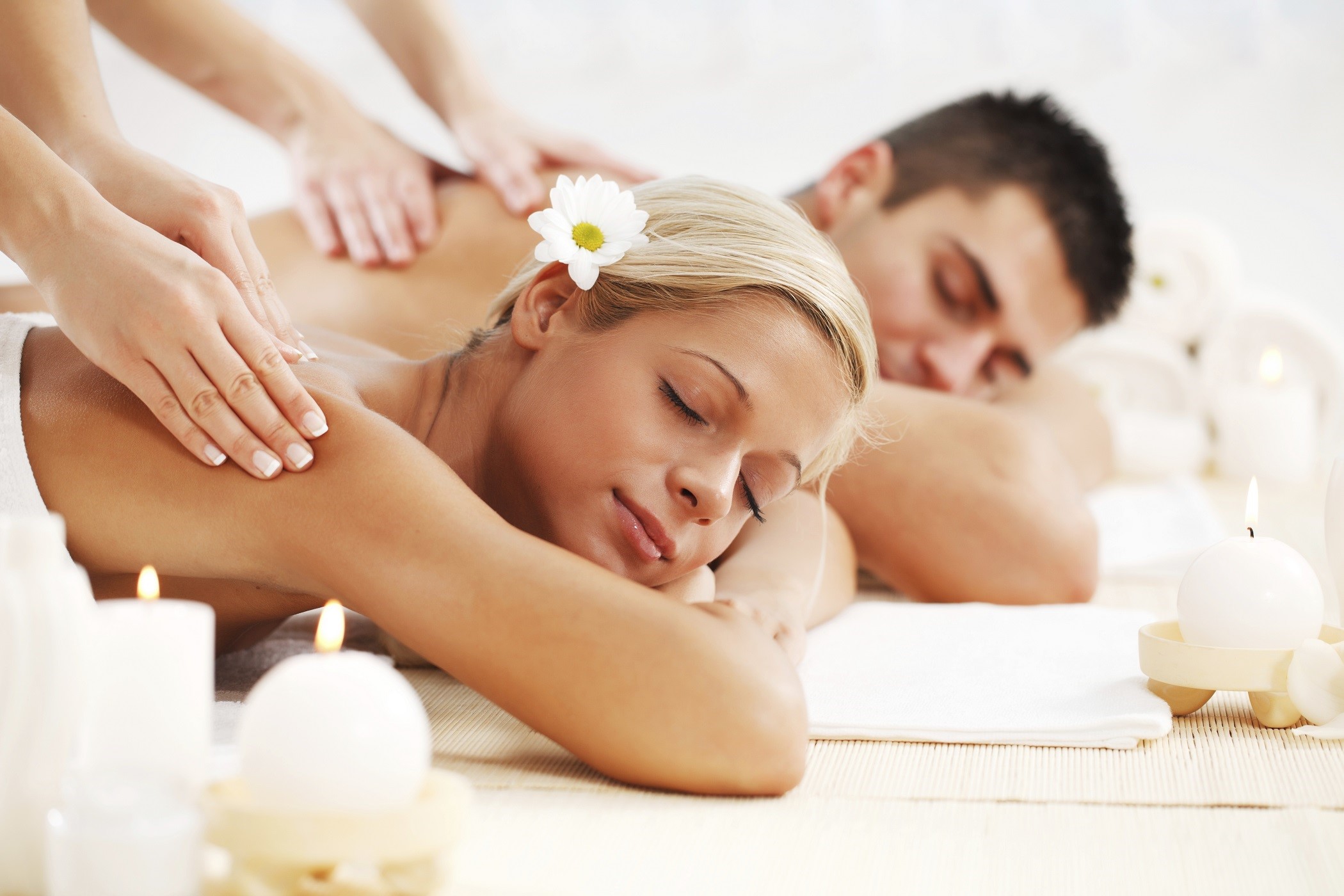
14 Aug The Wellness Revolution
At Blackberry Farm, a resort in Tennessee’s Smoky Mountains, a new “Wellhouse” offers Japanese forest bathing and other “deep healing woods” activities, including in-forest yoga, meditation and endurance hikes. At the Fairmont Princess in Scottsdale, Ariz., guests can do a whole lot more than keep up with their usual workout routines at the hotel gym: They can also get state-of-the art body-fat assessments and take the latest in fitness and wellness classes.
And in suburban New York and Washington, D.C., travelers now have the choice of a new, wellness-focused midscale hotel brand that has cork floors and in-room fitness equipment, healthy organic foods and bedding and amenities focused on relaxation and better sleep.
Over the past few years, wellness has moved way beyond the niche market of yoga retreats and fitness camps, informing and redefining virtually every aspect of the travel industry, from luxury hotels and spas to business hotels, even airports.
Several recent studies show wellness tourism is growing twice as fast as any other sector, and there are no signs that it will be letting up as everyone from aging baby boomers to millennials focus on adopting healthier lifestyles.
Mia Kyricos “First there were pools, then fitness centers and spas, and now it’s all wellness all the time,” said Mia Kyricos, chief brand officer of Spafinder Wellness.
“We’ve seen a real evolution of people trying to figure out how do I not just get a good massage, but how do I eat better, sleep better, exercise better, and how do I maintain that on the road?”
She pointed to a survey her group conducted last summer in which 20 % of travelers said they had taken a health-focused trip of some sort. And more than 62 % said they would like to.
Asked what they consider healthy travel, they listed healthy meals as a priority, along with access to outdoor activities in nature, yoga, meditation and mindfulness, nutrition and weight.
“There really is a growing sense that when you travel, your wellness should not be left at home,” said Sallie Fraenkel, former executive vice president of the Global Wellness Summit. “You don’t want to come home from a trip 10 pounds overweight, feeling just awful and not having slept.”
Enter the hoteliers.
Hotel companies, particularly in the luxury space, are responding.
Four Seasons, for example, recently launched an “energy” campaign that offers options such as healthy menus, rejuvenating spa treatments for guests recovering from jet lag on arrival and special fitness programs at their hotel gyms.
“It’s really a holistic approach to wellness,” said Michael Newcombe, general manager of the Four Seasons Westlake Village, which is adjacent to a wellness and longevity facility where guests can get everything from Botox injections to MRIs and deep blood work.
“The numbers show us the wellness industry is the quickest-growing industry globally. Our guests want to have the same access to healthy lifestyles on the road as they do at home.”
The pioneers.
While mineral spas, yoga and exotic wellness rituals have been around for ages, some trace the modern wellness tourism movement to Rancho La Puerta, a retreat that was opened in 1940 in Baja California. Its founders were Hungarian Edmond Bordeaux Szekely, also founder of the International Biogenic Society, and his wife, Deborah Shainman, whose mother was active in the New York Vegetarian Society.
“I would say they were kind of the birthplace [of wellness travel]”, said JoAnn Kurtz-Ahlers, a consultant who represents luxury resorts and spas around the world. “The owners were people who really believed in health. They started this kind of wellness center in Mexico.
Out of that grew wellness retreats like Canyon Ranch and the Pritikin Longevity Center, Kurtz-Ahlers said.
The real convergence of wellness and tourism took hold just over a decade ago as companies scrambled to follow early leaders like Six Senses in Asia with exotic new spas that offered local healing treatments and healthy menus. In North America, one of the leaders was Westin, which began focusing on broader wellness issues with its emphasis on comfortable beds and air quality.
The recent explosion of wellness, experts say, is being fueled in part by world crises like 9/11 and the Great Recession, as well as by a focus on health among aging baby boomers and rising health care costs.
“We saw it first with 9/11,” Kyricos said. “People were reminded of their own mortality.
Phase two, she said, was fueled by the global economic downturn that took hold in 2008.
“People were dealing with the highest levels of stress and anxiety,” Kyricos said. “They needed a timeout. … They started hearing about the benefits of massage, the benefits of sleep. … There is so much more evidence out there and people started to connect the dots in ways that had not happened before.”
People now realize, she said, that they need to deal with their stress and anxiety more regularly, “not just on a week’s vacation with the family.”
Because of that, wellness has now invaded all areas of travel, even airports.
“It’s kind of exciting, because it’s everywhere you go,” said Kurtz-Ahlers. “My vision is that airports will be a place of health and wellness. And it’s starting. Every time there is a renovation of an airport, there is a spa component, a place where you can get a 15-minute shoulder massage. When you think about it, if you can get a 15-minute neck massage before you get on the plane, it can make such a difference when you land.”
Travelers are also starting to see healthier food options at airport restaurants and shops.
Susie Ellis. In fact, the wellness movement is becoming so widespread and mainstream that some countries are talking about creating wellness ministers, according to Susie Ellis, president of Spafinder Wellness and CEO and chairman of the Global Wellness Institute.
“In Canada, provinces have wellness ministers,”she said. “India has a minister of yoga. Governments recognize that it’s a category that they want to attract people to come visit and promote their indigenous practices. … So you see the momentum is just going to accelerate.”
Luxury leads.
The biggest growth in wellness tourism, of course, has come at the luxury level– so much so that the International Luxury Travel Market (ILTM) has eliminated its special spa events and integrated spa into its all of its shows.
“Spa is a now a definitive element of luxury travels, and we see no end to this trend,” said Alison Gilmore, senior exhibition director for ILTM. “The global spa industry has grown by 58 % since 2007 and is now valued at $94 billion.”
In luxury, Kurtz-Ahlers said, spas and wellness have become a point of entry.
“If you have a luxury resort, the stakes are really high in terms of the offerings and people. … It gets down to not just having a massage therapist, but how good is the massage therapist?
From the Middle East to Fiji to Nicaragua, new luxury resorts in emerging markets are heavy on the wellness, with much of their focus tied to indigenous techniques.
“It used to be you had to go to Bali or Thailand to get a real wellness experience,” said Trevor Barran, CEO of Aqua Nicaragua Wellness Resort. “Nicaragua is emerging as a kind of Bali-like product.”
Barran said that except for a Barcelo resort near Managua, Aqua Nicaragua is the country’s largest resort, with 48 rooms. The resort hosts yoga retreats and offers a variety of activities, from hiking, spinning, surfing and rappelling to chocolate-making classes. Its health-focused menus also include raw foods.
Another wellness resort in Nicaragua, Mukul, has six spa buildings where guests can get hammam, energy and crystal treatments.
And the Jean-Michel Cousteau Resort in Fiji offers a medicine walk, during which guests can learn about 24 plants that offer a natural cure for a multitude of ailments.
Ellis said much of the popularity of such retreats is being driven by research that documents the health benefits of spa treatments and the wellness-related activities now offered at resorts.
As an example, she points to forest bathing, a treatment that originated in Japan and is essentially a leisurely walk in the woods. Her group recently listed it as the top wellness trend for 2015.
Ellis said that in preparing the report, she found more than 100 clinical studies touting the benefits of forest bathing, mostly from Japan, which offer evidence that it helps lower blood pressure, heart rate and cortisol levels and helps with stress and depression.
Blackberry Farm, a 30-year-old resort, just opened Wellhouse, a comprehensive spa and wellness center with a focus on Japanese forest bathing.
In addition, luxury hotels around the world are transforming their spas into state-of-the art fitness and wellness.
Trilogy Holdings, for example, which opened its first Well & Being center at the Fairmont Princess in Scottsdale, is currently working on its second center at the Four Seasons in the Dallas suburb of Las Colinas, a center that the company said will be the largest fitness and wellness facility at any resort in North America.
Migrating downscale.
Just as organic foods moved from Whole Foods to the shelves in Wal-Mart, wellness is also spreading throughout the hospitality industry.
InterContinental Hotels Group, for example, has a launched a brand called Even, which is focused on helping business travelers maintain a healthy lifestyle on the road.
The midscale properties don’t have spas, but all have modern fitness centers, as well as exercise equipment and cork floors in each room for road warriors who prefer a private workout. The hotels’ menus, bedding and amenities, too, are focused on health and restful sleep.
In a similar way, the wellness trend is transforming the meetings industry. When pastries were the norm for breakfast and cookies the preferred afternoon snack, gone are the days.
At hotels like Four Seasons and the Fairmont Princess, the sales and wellness teams work hand-in-hand to offer healthy meetings.
Whether it’s a group fitness class or a nutritious lunch, said Brennan Evans, managing director of Well & Being in Scottsdale, “being able to have healthy meetings or healthy experiences seems to be resonating well.”
He said meetings planners can contract fitness classes; organize relays and all sorts of fitness activities that also serve as team-building exercises.
They also offer nutritional activities, such as a salad-making challenge.
“Then we judge them,” Evans said. Who really is just going to get fat?
Looking ahead, most industry experts predict that the wellness-in-travel trend will continue to grow, and it will likely expand to include healthier activities for kids as well as adults.
With so many youngsters now glued to their iPads, Kyricos predicts that parents are going to be “looking for– demanding– more activities” for children.
“The initial trend of kiddie spas for hair and makeup, I think you are going to see that evolve into something that is more significant,” she said. “Because I think parents now are really challenged in finding ways to socialize their kids and get them to participate in special activities.”


No Comments